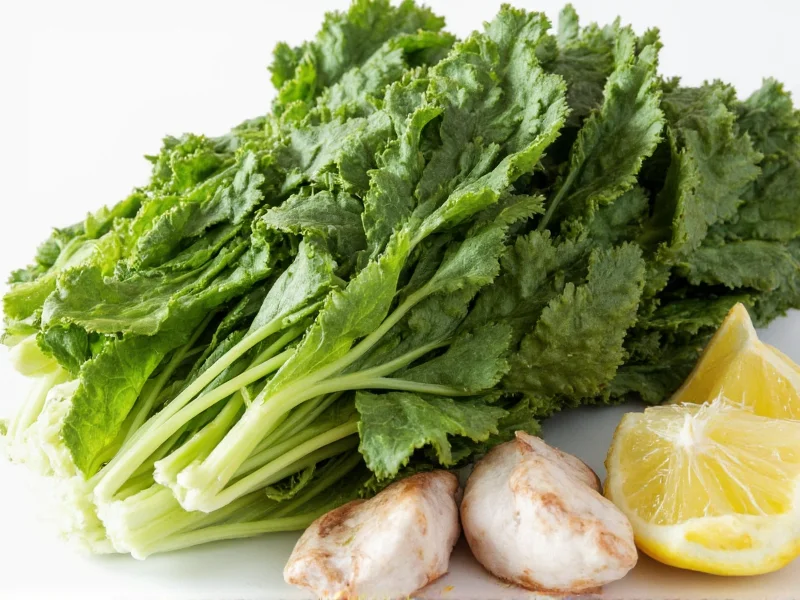When searching for vegetables with distinctive flavor profiles, few match the unique licorice-like taste of fennel. This versatile vegetable has been cultivated since ancient times, prized for both culinary and medicinal properties. Understanding why certain vegetables develop this distinctive flavor requires examining the chemical compounds responsible for our taste perception.
The Science Behind Licorice-Flavored Vegetables
The characteristic licorice flavor in vegetables primarily comes from a compound called anethole. This organic compound activates specific taste receptors that our brains interpret as sweet and aromatic with distinct anise notes. Anethole is remarkably stable during cooking, which explains why fennel maintains its flavor profile whether raw, roasted, or braised.
Interestingly, genetic factors influence how strongly people perceive this flavor. Approximately 20% of the population has a genetic variation that makes anethole taste intensely bitter rather than sweet, explaining why some individuals dislike fennel while others enjoy its distinctive profile. This genetic difference affects how we experience not just fennel, but all anethole-containing plants.
Fennel: Nature's Licorice Vegetable
Fennel (Foeniculum vulgare) stands as the most prominent vegetable with natural licorice flavor. This perennial herb produces a bulbous base that serves as the primary edible portion. The entire plant is usable:
- Bulb - Crisp, refreshing with mild licorice notes when raw, becoming sweeter when cooked
- Fronds - Delicate, feathery leaves with stronger anise flavor, perfect for garnishes
- Seeds - Concentrated licorice flavor, commonly used as spice
Select firm, heavy bulbs with bright white color and no brown spots. Store wrapped in a damp paper towel in the refrigerator's crisper drawer for up to 5 days. For optimal flavor retention, avoid cutting fennel until ready to use, as exposure to air accelerates flavor degradation.
Other Plants with Licorice Notes
While fennel reigns supreme among vegetables with licorice flavor, several other plants share similar taste characteristics:
| Plant | Flavor Intensity | Primary Use | Seasonality |
|---|---|---|---|
| Fennel bulb | Moderate to strong | Raw salads, roasted, braised | Fall through early spring |
| Lovage | Strong | Stocks, soups, stews | Spring through summer |
| Tarragon | Moderate | Herb garnish, sauces | Spring through fall |
| Star anise | Very strong | Spice, infusions | Year-round (dried) |
Lovage, often overlooked in Western cuisine, delivers a powerful celery-licorice hybrid flavor. Its leaves and stems work well in soups and stews, though the flavor intensifies with cooking. Tarragon, while technically an herb, functions like a vegetable in many culinary applications and offers subtle licorice notes that complement fish and chicken dishes.
Culinary Applications for Licorice-Flavored Vegetables
Understanding how to balance fennel's distinctive flavor separates novice cooks from experienced ones. When preparing raw fennel salads, slice the bulb paper-thin using a mandoline for optimal texture. The sharpness of raw fennel beautifully contrasts with citrus segments and bitter greens. For cooked applications, roasting caramelizes the natural sugars, mellowing the licorice notes while enhancing sweetness.
Professional chefs recommend these pairing principles for vegetables with licorice flavor:
- Combine with citrus to cut through the sweetness
- Balance with bitter elements like radicchio or endive
- Pair with fatty fish like salmon to complement the flavor profile
- Add during the last 15 minutes of cooking to preserve flavor integrity
For those new to cooking with fennel, start with small quantities and gradually increase as your palate adapts. The vegetable's flavor compounds integrate beautifully with dairy, making it an excellent addition to creamy soups and sauces.
Common Misconceptions About Licorice-Flavored Vegetables
Many people mistakenly believe celery has licorice notes, but this perception typically comes from confusing celery with lovage, which belongs to the same plant family but delivers a much stronger anise flavor. Similarly, some confuse dill with licorice-flavored plants, though dill's flavor profile comes from different compounds entirely.
Another common misconception involves preparation methods. Many home cooks discard fennel fronds, unaware they contain concentrated flavor perfect for pesto or as a garnish. The seeds, often overlooked, make excellent tea for digestive support and work beautifully in spice rubs for meats.
Nutritional Benefits of Fennel
Beyond its distinctive flavor, fennel offers impressive nutritional benefits. A single cup of raw fennel provides 17% of your daily vitamin C needs and contains significant amounts of potassium and manganese. The vegetable's fiber content supports digestive health, while its antioxidant profile helps combat inflammation.
Research indicates that anethole, the compound responsible for fennel's licorice flavor, may have anti-inflammatory and antimicrobial properties. Traditional medicine systems have long used fennel for digestive support, and modern science continues to investigate these potential health benefits.











 浙公网安备
33010002000092号
浙公网安备
33010002000092号 浙B2-20120091-4
浙B2-20120091-4